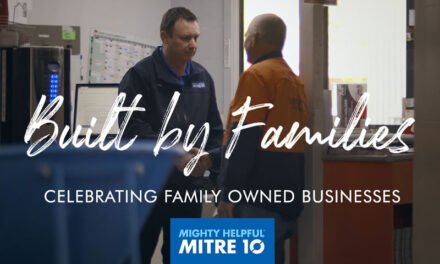Sharing information across your teams can also help to build better shared solutions. By Peter Maguire
As an employer, you are legally required to consult your employees on matters that significantly affect them whether that has to do with Workplace Health and Safety or changes to business structures or the introduction of new technology or variations to working hours or reduction or relocation of jobs to name a few things. Yes, that is just one more piece of compliance that you have to deal with… right?
That means you will probably have to get some legal advice; you’ll need someone competent to make sure the communications are legally OK and you’ll want to make sure that you tick all of the risk management boxes so you are not exposed… right?
Perhaps you think that telling people what is happening in the business so that they know what is going on is a good thing (and it is) and that that means you are consulting them (wrong, but it is a good start).
Or you may think that when you are introducing some sort of change, you satisfy your duty to consult by simply telling them what is happening and how it will affect them (again wrong but at least you are informing people which is better than not doing it at all).
WHAT IS CONSULTATION?
Consultation is far more than just telling people about changes that you are implementing.
There are essentially five steps in a proper and constructive consultation process:
- Inform people about the issue and why it is an issue – give people enough information for them to be able to understand it and the impacts it could have.
- Tell people what you think you should do about that issue and ask them for their thoughts on what you are proposing or any other ideas they have.
- Consider what people have had to say and make sure you explore their ideas to see if they have merit and whether you should take a different or a modified approach.
- Inform people about your considerations and what you have concluded and why in each case whether you agreed or not (so they know you have listened to them).
- Confirm what is going to happen and why so that everyone understands.
Sometimes, the issue can be complicated or there can be developments that require reconsideration of the issue before you have reached a resolution – if that happens, just repeat the process until you reach a conclusion.
Ensure that you document everything along the way so that you have a record of the consultation process whether that is in meeting minutes, in memos or presentations or emails or some other medium. That will help to demonstrate that you have met your compliance obligations under the Fair Work Act, modern awards or workplace health and safety or other legislation.
COULD THERE BE MORE?
One of the things that we know to be an essential ingredient for high-performing teams is employee voice. That means people believing that:
- They have a voice
- It is psychologically safe for them to use that voice
- Their voice will be listened to and what they have to say will be considered
- They will get a reasonable response in reasonable time with reasons
Proactive consultation and communication not only get more buy-in and engagement from people, it makes for better decision making and helps with implementing change efficiently.
Additionally, psychological safety is an absolutely critical requirement for mentally healthy workplaces where people interact in positive and collaborative ways.
There is also the reality that, when you ask your people for their thoughts on an issue, you are drawing on the collective experience and the individual strengths that all of these people have. Often one of those people might have had a relevant experience that can be learned from or they bring a particular perspective to an issue that you hadn’t considered.
DO YOU HAVE A SAFETY OR CONSULTATIVE COMMITTEE?
Lots of businesses have set up Safety Committees or Consultative Committees because they have been required to (eg WHS legislation might require a Safety Committee if employees ask for it) and/or someone thought it was a good idea to be seen to be doing something about consulting with employees.
Unfortunately, what can happen with these committees if they are not properly constituted (that is, with the right purpose and rules) and positioned (with the right role and processes) and committed to in practice (by allocating time and resources to act on the stuff they deal with), is that they become complaint forums or are just ineffective in playing a meaningful role for both employer and employees (which is to say they don’t deliver any real change).
If you are in this space, having a committee that doesn’t really work can actually be counter-productive in seemingly demonstrating to employees that management really isn’t hearing them at all.
On the other hand, if you treat them as workplace improvement teams where the representatives from management and employees work together on issues that need to be addressed with a positive mindset and clear purpose, roles, rules, plans, resources and outcomes, they can be transformative for a business, its performance, its culture and its people.
If you want to develop that sort of approach, find yourself someone who can facilitate it who understands both the legal consultation requirements and how to build engaged and effective teams.
Training and facilitation of Workplace Improvement Teams is one of the services that we provide at Ridgeline HR.
Peter Maguire is the owner and practice leader of Ridgeline HR, an award winning HRM consulting practice which he founded in 2000. Peter is an acknowledged expert in workplace relations compliance and also a high-performance leadership coach with over 40 years’ experience in HRM. Ridgeline HR’s byline is Helping PEOPLE in BUSINESS and that is essentially what Peter does – help business people with their people business.












